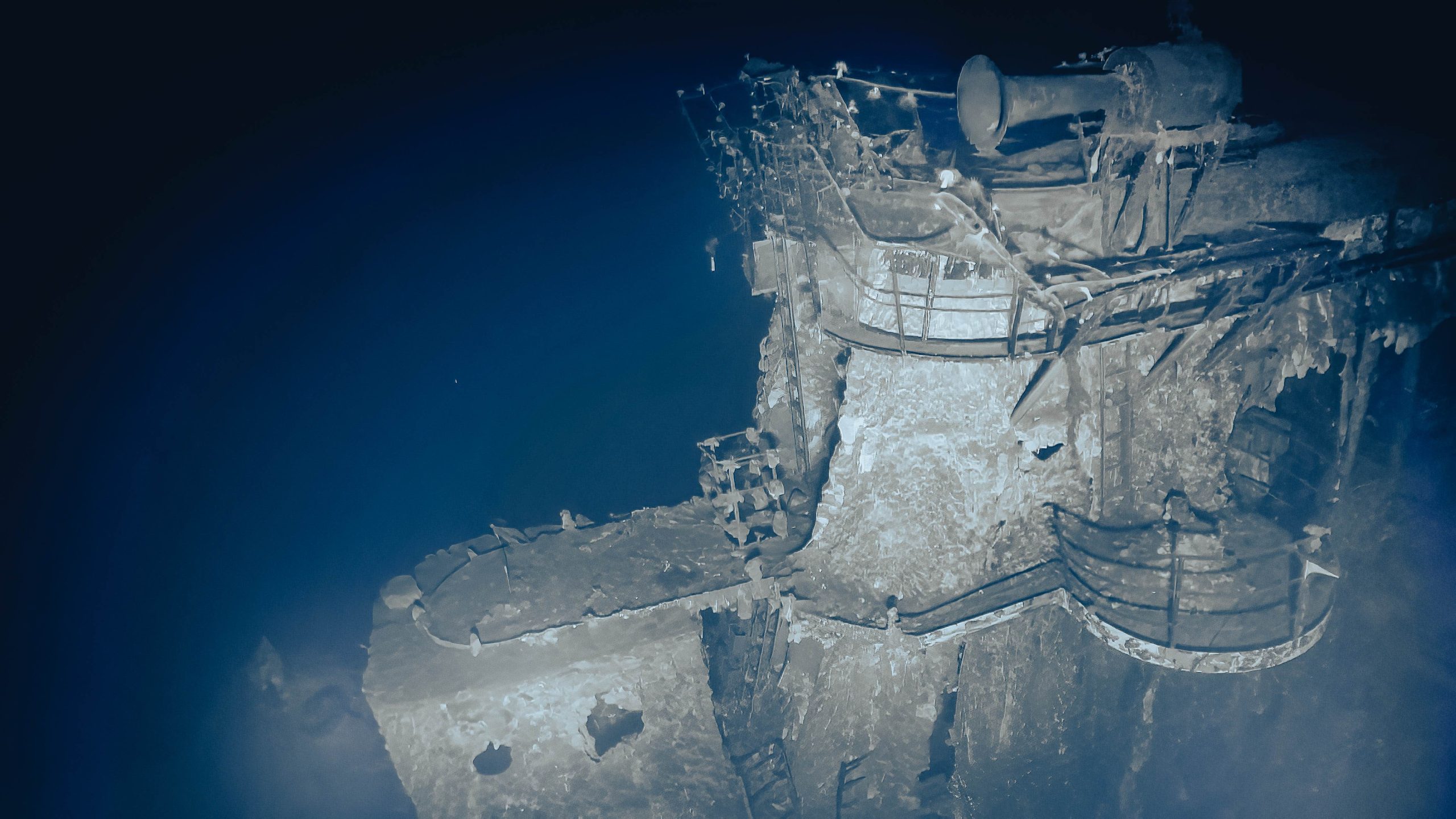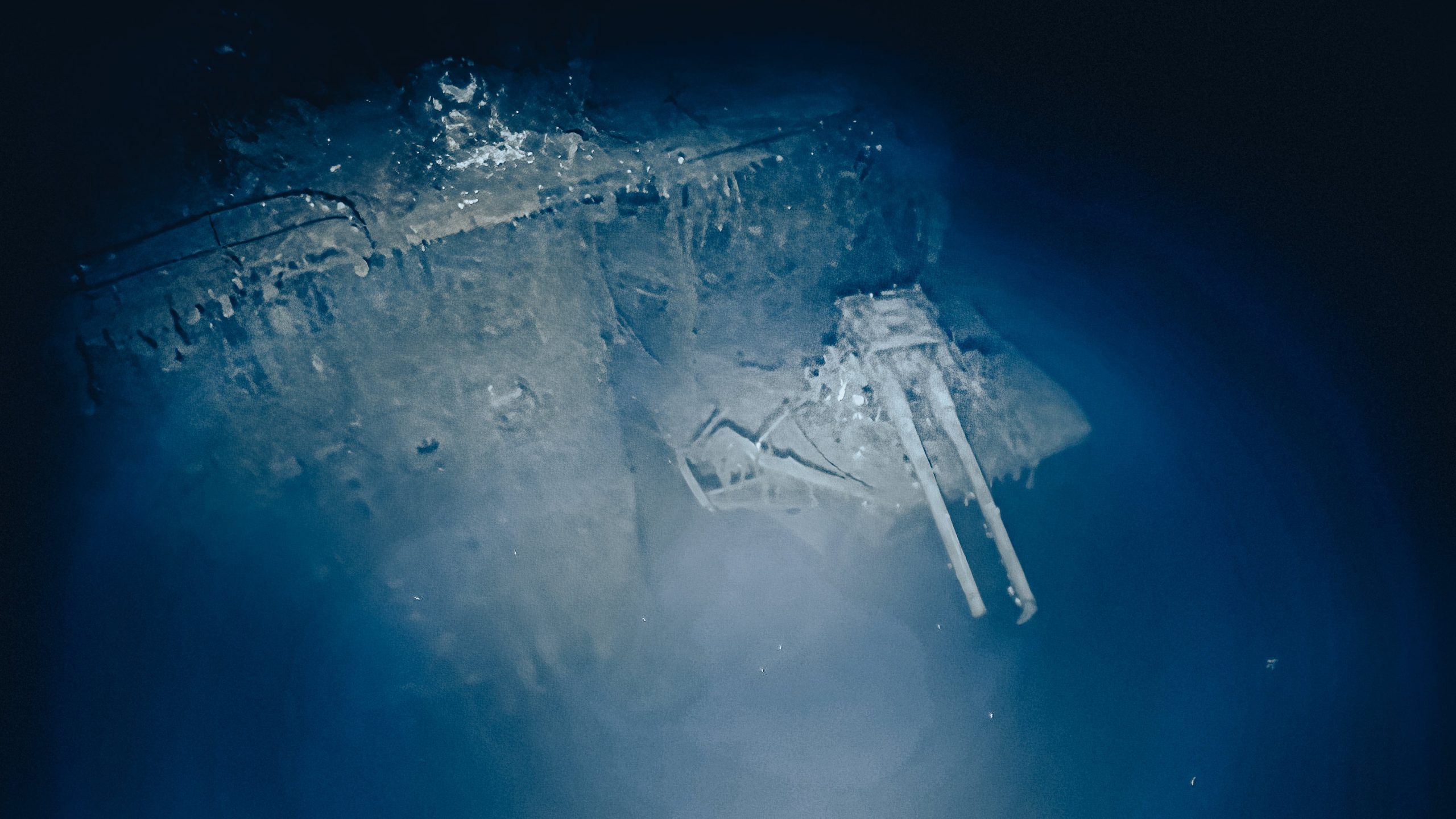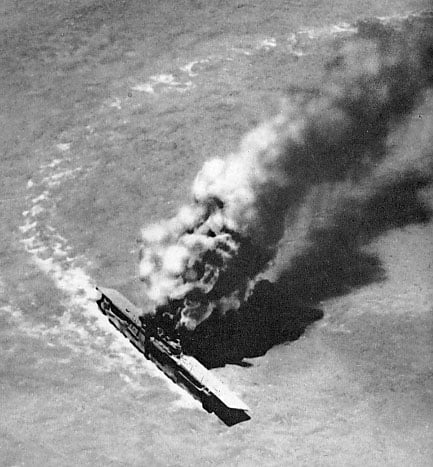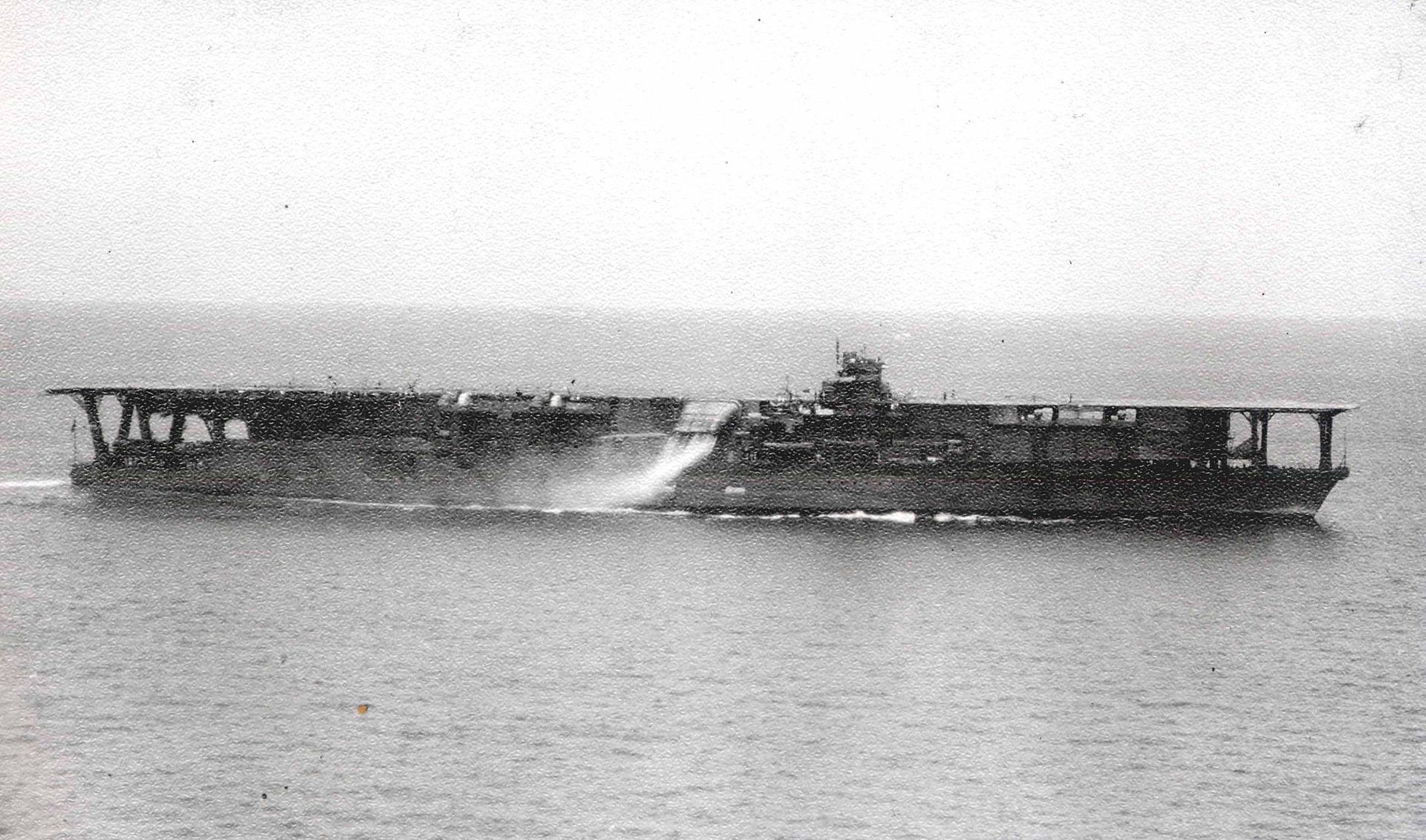
New images by Ocean Exploration Trust show in detail the wrecks of USS Yorktown (CV-5) and two Japanese aircraft carriers IJN Kaga and IJN Akagi sunk during the pivotal World War II Battle of Midway.
“During over 43 hours at depth [using remotely operated vehicles], we methodically circumnavigated these historic wrecks, bringing to light many features in great detail, including their armament, battle, and sinking-related damage,” Daniel Wagner, the trust’s chief scientist, said in a statement.
“Many antiaircraft guns were still pointing up, providing clues about the final moments on these iconic ships.”
The ROVS, launched from Exploration Vessel Nautilus, provided images for the first time of IJN Akagi and the first detailed views of Yorktown. The three wrecks – the third carrier was IJN Kaga – were explored within the Papahānaumokuākea Marine National Monument (PMNM), the largest protected area in the United States and one of the largest in the world. It is also a UNESCO World Heritage Site.
James Delgado, senior vice president for SEARCH Inc. and involved in the planning for this mission, told USNI News, ”Several of us had advanced a return to Midway as the previous work had been limited by technology as this is at the extreme limit of capacity for work at these depths (18,000 feet). Equipment failures with ROVs had limited the time spent in assessing Yorktown in 1998 and Kaga in 2019, and Akagi had been sonar mapped but not dived. We also took this opportunity to continue mapping to see if we could find the other wrecks.”
Ocean Exploration Trust used their remotely operated vehicle (ROV) Atalanta to examine the wrecks as part of the Ala ʻAumoana Kai Uli expedition.
“The surveys were as comprehensive as we could make them; detailed, slow methodical documentation of each hull, at the mudline and at higher elevations, over the flight decks, and detailed assessment where we could get in closer; we assessed battle damage, evidence of other actions (such as the crew’s fight to save USS Yorktown) as well as what happened with the sinking of each carrier,” said Delgado. “We also assessed where we could, especially with Kaga, large pieces of debris that came off the hull as the carrier fell through the water and impacted on the seabed. The 16–19 hour watches we did, without sleep, mean that going back to the videos will likely reveal additional details.”

The survey of Akagi – which had been previously sonar mapped – lasted 14 hours. Robert Ballard, president of Ocean Exploration Trust, discovered Yorktown’s site 25 years ago.
Megan Cook was the expedition leader. Delgado praised “the exceptional skill of the onboard team, from pilots, navigators, data loggers, and the ship’s officers and crew.” He viewed the mission at the National Oceanic and Atmospheric Administration’s (NOAA’s) offices in Silver Spring, Md., with other archaeologists, historians and marine scientists. The trust said more than 100 experts around the world were able to participate via telepresence “in helping guide the mission and providing valuable real-time interpretations.”
Delgado, a former director of NOAA’s Maritime Heritage Program, will be a team leader, “coordinating the production of the final report and other publications with my colleagues” when the data becomes available ashore. He cited as key participants three Japanese archaeologists – Jun Kimura, Akifumi Iwabuchi and Randy Sasaki.

Retired Rear Adm. Samuel Cox, director of the Naval History and Heritage Command, said in a statement, “We’re incredibly grateful for collaborative relationships – such as the Ocean Exploration Trust and NOAA’s Office of Ocean Exploration on this expedition – which enable us to document and access the condition of these important war graves of both American and Japanese sailors.”
Delgado added, “There are two things that make this unique [in operations and live streaming]; the first is that these were available, live, for the public to watch, and around the world. We had many people tuning in and sending in comments to the ship; questions were answered where we could (there were MANY) and comments, including gratitude from families in the U.S. and Japan for closure that came with these visits, as these wrecks are the graves of their family members, was also important, and powerful. The team on the ship and ashore also took time to shift from technical to more accessible language, providing explanations and context for what we were seeing. The team is always very much aware that we are reaching the public, including learners of all ages.”

The monthlong survey was years in the planning in the United States and Japan. Kosei Nomura, head of economic security at the Japanese embassy in Washington, said in a statement, “We are reminded that today’s peace and tomorrow’s discoveries are built on the sacrifice of war, and so in my view, it is meaningful that Japan and the U.S. are now deepening their cooperation at Midway.”
Delgado noted these waters also have special significance to the Hawai’ian community. “The mission focused on that very important aspect of these waters, and the spiritual meaning of what we were doing.”